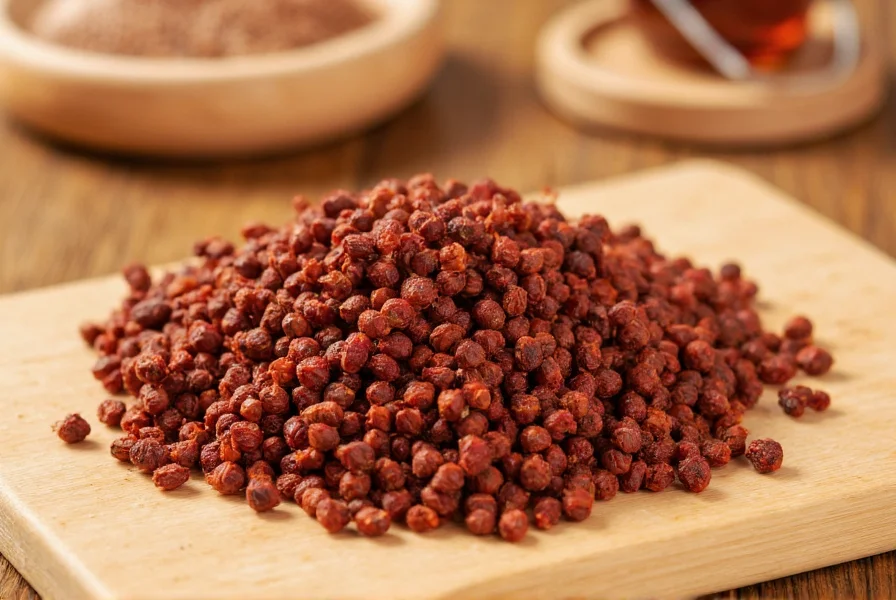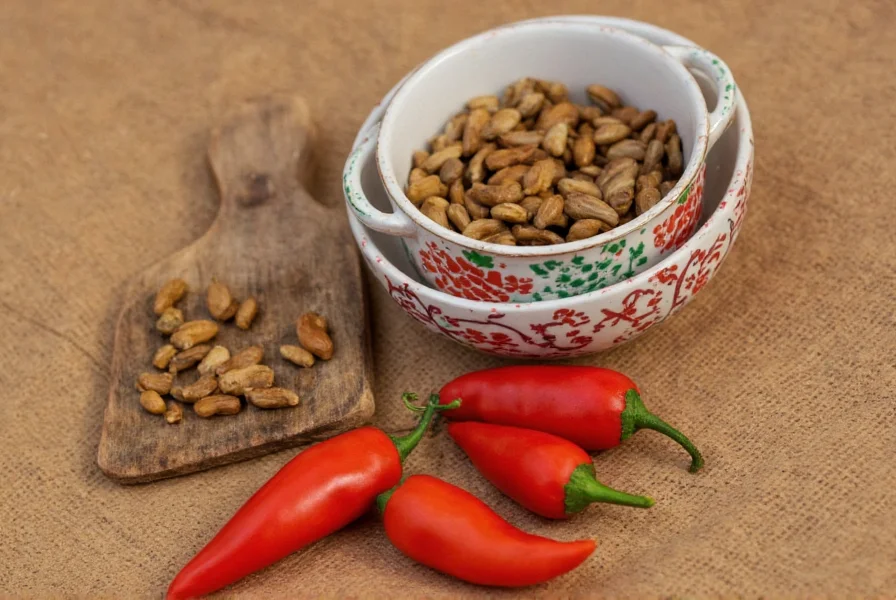Often called the "Nepalese grapefruit pepper," timut pepper has emerged from relative obscurity to become a sought-after ingredient among culinary professionals seeking distinctive flavor experiences. Unlike traditional black pepper that delivers straightforward heat, timut pepper offers a multi-dimensional sensory journey that begins with bright citrus notes and finishes with the characteristic tingling sensation associated with Szechuan peppercorns.

Understanding Timut Pepper's Origins
Native to the mountainous regions of Nepal at elevations between 1,500-2,700 meters, timut pepper grows wild in the Himalayan foothills where it has been used for centuries in traditional Nepalese cuisine and Ayurvedic medicine. The name "timut" comes from the Nepali word for "tingling," perfectly describing its most distinctive characteristic.
Botanically, timut pepper belongs to the Rutaceae family, making it more closely related to citrus fruits than to true peppers. It's a specific variety of Szechuan pepper (Zanthoxylum armatum) that develops unique flavor compounds due to the specific terroir of the Nepalese Himalayas. The berries grow on small thorny trees and are harvested when nearly ripe, then sun-dried until they split open to reveal the characteristic black seeds inside.
Flavor Profile and Sensory Characteristics
Timut pepper's flavor profile sets it apart from other spices in your pantry. When properly stored and used, it delivers:
| Characteristic | Description | Compared to Szechuan Pepper |
|---|---|---|
| Aroma | Bright grapefruit with hints of lemon and floral notes | More citrus-forward than standard Szechuan |
| Taste | Citrusy upfront with subtle floral notes | Less woody, more refined citrus notes |
| Mouthfeel | Pronounced tingling sensation (not heat) | Similar numbing effect but more intense |
| Aftertaste | Clean, refreshing citrus finish | Less earthy, more vibrant finish |
The tingling sensation—known as paresthesia—results from hydroxy-alpha sanshool, a compound that stimulates nerve endings in the mouth. This effect enhances other flavors rather than overpowering them, making timut pepper an excellent choice for balancing complex dishes.
Culinary Applications and Pairing Suggestions
Chefs increasingly incorporate timut pepper into both traditional and innovative dishes due to its versatility. Unlike many specialty spices that work only in specific cuisines, timut pepper complements a surprisingly wide range of ingredients.
For savory applications, consider using timut pepper with:
- Fish and seafood (particularly salmon and scallops)
- White meats like chicken and pork
- Creamy sauces and cheeses
- Roasted root vegetables
- Vinaigrettes and citrus-based dressings
Its bright citrus notes also make timut pepper an unexpected but delightful addition to sweet preparations:
- Chocolate desserts (especially dark chocolate)
- Citrus-based desserts like lemon tarts
- Fruit salads featuring berries or tropical fruits
- Cocktails and non-alcoholic beverages

How to Use Timut Pepper Effectively
Because of its delicate flavor compounds, proper handling ensures you maximize timut pepper's potential in your cooking:
Storage: Keep timut pepper in an airtight container away from light and heat. The volatile citrus oils degrade quickly when exposed to air, so whole berries maintain freshness longer than pre-ground versions. Properly stored, whole timut pepper retains optimal flavor for 6-12 months.
Preparation: Unlike black pepper that benefits from grinding just before use, timut pepper works best when lightly crushed rather than finely ground. Use a mortar and pestle or spice grinder pulsed briefly to release the essential oils without creating dust that loses aroma quickly.
Timing: Add timut pepper toward the end of cooking or as a finishing spice. High heat diminishes its delicate citrus notes, so incorporate it in the last 2-3 minutes of cooking or sprinkle over finished dishes.
Quantity: Start with small amounts—a quarter to half teaspoon per serving—and adjust to taste. Its flavor intensifies as it sits, so allow 5-10 minutes after adding for flavors to develop before adjusting seasoning.
Distinguishing Timut Pepper from Similar Spices
Many people confuse timut pepper with other members of the Zanthoxylum family. Understanding these differences helps you select the right spice for your culinary needs:
Timut Pepper vs. Szechuan Pepper: While both create tingling sensations, timut pepper delivers more pronounced grapefruit notes with less woody background flavor. Szechuan pepper (typically Zanthoxylum simulans or Z. piperitum) tends to have more earthy, pine-like characteristics with subtle citrus undertones.
Timut Pepper vs. Black Pepper: True black pepper (Piper nigrum) provides straightforward heat without the citrus notes or tingling sensation. The two spices work well together, with timut pepper adding complexity to black pepper's heat.
Timut Pepper vs. Pink Peppercorns: Despite the similar color, pink peppercorns (Schinus molle) come from a completely different plant family and deliver a milder, resinous flavor without the distinctive tingling sensation.
Finding Quality Timut Pepper
As timut pepper gains popularity, more specialty spice retailers offer it, though quality varies significantly. When selecting timut pepper, look for these indicators of freshness and quality:
- Bright reddish-brown color (dull or faded indicates age)
- Intact berries that haven't lost their outer husk
- Strong citrus aroma when crushed
- Origin information specifying Nepal or Himalayan region
- Harvest date or "best by" date (within 12 months preferred)
Avoid products labeled simply as "Szechuan pepper" if you specifically want timut pepper, as this broader category includes multiple Zanthoxylum varieties with different flavor profiles. Reputable spice companies will specify "Nepalese timut pepper" or "Zanthoxylum armatum" on their packaging.
Exploring Timut Pepper in Your Kitchen
Experimenting with timut pepper opens new dimensions in your cooking. Start with these simple applications to develop your understanding of how this unique spice interacts with other ingredients:
Create a versatile citrus-timut salt by combining equal parts flaky sea salt and crushed timut pepper. Use this blend to finish grilled fish, roasted vegetables, or even chocolate desserts. The salt helps distribute the pepper's flavor evenly while enhancing its natural citrus notes.
For a quick flavor boost, add a pinch of crushed timut pepper to your next homemade vinaigrette. It pairs exceptionally well with citrus juices, enhancing the brightness while adding complexity that regular pepper cannot provide.
Don't limit yourself to savory applications—try a pinch of timut pepper in your berry smoothie or sprinkled over fresh watermelon. The tingling sensation enhances the fruit's natural sweetness while the citrus notes complement summer flavors beautifully.
Frequently Asked Questions
What makes timut pepper different from regular black pepper?
Timut pepper doesn't provide heat like black pepper. Instead, it delivers a distinctive grapefruit-like citrus flavor with a tingling sensation caused by hydroxy-alpha sanshool compounds. While black pepper comes from the Piper nigrum plant, timut pepper is a type of Szechuan pepper (Zanthoxylum armatum) native to Nepal.
Can I substitute timut pepper for Szechuan pepper in recipes?
Yes, but with flavor adjustments. Timut pepper has more pronounced citrus notes than standard Szechuan pepper, so you may want to use slightly less initially. The tingling sensation is similar, but timut pepper's brighter flavor profile works better in dishes where citrus complements other ingredients.
Does timut pepper expire or lose potency over time?
Yes, timut pepper gradually loses its distinctive citrus aroma and flavor. Whole berries retain freshness for 6-12 months when stored in an airtight container away from light and heat. Ground timut pepper loses potency more quickly—within 3-6 months. The tingling sensation remains longer than the citrus notes, so older pepper may still provide mouthfeel without the characteristic aroma.
Is timut pepper safe for people with citrus allergies?
Timut pepper isn't a true citrus fruit but does contain compounds that create citrus-like flavor notes. People with severe citrus allergies should consult their healthcare provider before trying timut pepper, as individual reactions may vary. The compound responsible for the citrus flavor (limonene) differs from the proteins that typically trigger citrus allergies.
Why is timut pepper more expensive than other specialty peppers?
Timut pepper commands higher prices due to its limited growing region in the Nepalese Himalayas, labor-intensive harvesting process (berries must be hand-picked at precise ripeness), and growing international demand among professional chefs. The trees grow wild rather than in cultivated plantations, making supply more limited and seasonal.











 浙公网安备
33010002000092号
浙公网安备
33010002000092号 浙B2-20120091-4
浙B2-20120091-4